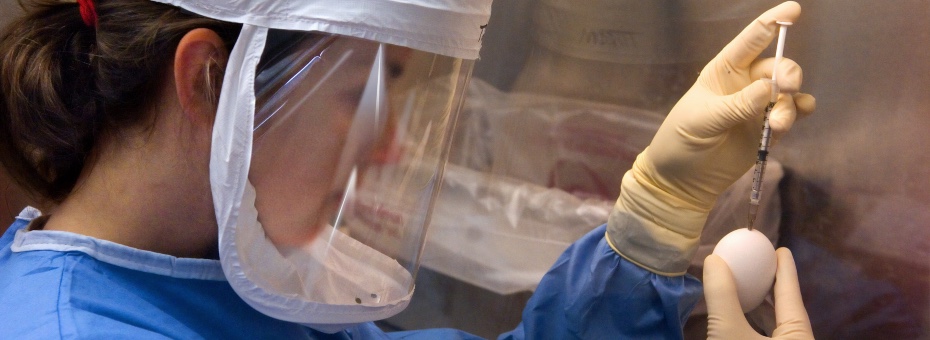Covid-19 has now infected 16 million people around the world and killed more than 660,000. And the devastation continues. Thankfully the sacrifice and incredible hard work of our front line healthcare heroes have kept us from an even greater tragedy, but their resources are not unlimited. Most scientists and medical professionals agree that the only long-term solution to the pandemic lies in a safe and effective vaccine.
In the global race for a vaccine, according to the World Health Organization, 25 potential vaccines are in clinical evaluation, and another 139 are in preclinical evaluation phase of development. The three leading candidates are two vaccines based on messenger RNA from Moderna and a Pfizer-BioNTech SE partnership, and a more traditional approach led by an Oxford–AstraZeneca partnership. Tens of thousands of people working around the clock to solve the trickiest immunization puzzle in decades—with so much at stake.
As journalist Elaine Chen points out in her July 2020 Wall Street Journal article, finding the vaccine is just the beginning of this herculean challenge. The hurdles associated with the testing, materials, manufacturing, distribution, and applications required to get hundreds of millions of doses to people around the world are enormous, and potential failure modes at each step immense. All of this is exacerbated by the speed at which all this must be accomplished.
Chen quotes Pfizer’s Pamela Siwik, VP of Global Supply, “Just every day, (we are) trying to do things we normally do in a year, do them in months. Things that normally take months, do them in days.” It’s clear that teams need to design more than a lifesaving product; they need to design a new value stream, and every minute counts.
It’s clear that teams need to design more than a lifesaving product; they need to design a new value stream, and every minute counts.
This is precisely why a lean approach to new product creation is so powerful. Not only in this case but wherever teams are challenged to bring critical products to market. Lean product and process development (LPPD) enables organizations to design new value streams instead of products in isolation. In fact, this is a foundational and key differentiating characteristic of it. In Lean Product and Process Development (Lean Enterprise Institute, 2014), Allen C. Ward and Durward K. Sobek II write, “The aim of lean product and process development is the creation of profitable operational value streams.”
How LPPD Helps Accelerate Value Stream Innovation
LPPD means intentionally designing each and every step required to deliver value to the customer. The goal is to create maximum value and minimum waste across the entire set of activities associated with your product or service. And it starts from the very beginning of development during the study phase.
 The Virtual Lean Learning Experience 2020 (VLX), hosted by the nonprofit Lean Enterprise Institute (LEI), features a two-week immersion into LPPD principles and practices. Register and hear from the foremost practitioners and coaches how you can design your company’s future with LPPD. For more information about:
The Virtual Lean Learning Experience 2020 (VLX), hosted by the nonprofit Lean Enterprise Institute (LEI), features a two-week immersion into LPPD principles and practices. Register and hear from the foremost practitioners and coaches how you can design your company’s future with LPPD. For more information about:
- the VLX 2020 Designing the Future track
- participating in a FREE VLX 2020 session featuring Jim Womack and Jim Morgan
My first experience designing value streams instead of products in isolation was many years ago in a joint Ford-Mazda project. I was part of a team that employed the simple but potent concept of “compatibility before completion” to orchestrate multiple complex workflows from across two organizations to achieve remarkable results. Since then, my colleagues and I have worked with many organizations to successfully implement adapted versions of this concept in a variety of industries, including the Clinical Design and Innovation (CDI) team at Michigan Medicine to design patient pathways with the goal of improving both patient outcomes and experiences. The CDI team starts by going to gemba (the place where the real value-creating work gets done) and bringing together all the value stream stakeholders to begin to close knowledge gaps in their quest to deeply understand all the steps of the patient’s journey.
The vaccine development team must do the same thing to start closing some pretty significant knowledge gaps. How do we organize our testing? How and where to get subjects? How and where will we manufacture the vaccine? Do we have sufficient capacity? Can we use existing processes and technologies?
In the case of the mRNA vaccines, all new processes and equipment will be required. What do we and don’t we understand about this manufacturing process? How can we quickly test our hypothesis? Do we have enough materials, vials, and syringes? Are there special temperature or other care requirements? What will that mean for shipping and storage? How do we do that in areas with insufficient infrastructure? Who are our customers? Where do they reside? How will they react? How do we get information to healthcare professionals? Are there special instructions for them? How do we give patients confidence in the safety and efficacy of this vaccine?
This is just a small sample of the questions the team will need to tackle long before the actual vaccine is available. In each case, they must ask, “How can we quickly experiment to learn?” As the team closes these knowledge gaps and begins to converge on a vision and plan, they need to share that with all the people required to execute this challenge with a concept paper. Ideally, a “Chief Engineer” would be responsible for aggregating and coordinating work across disciplines, making key trade-off decisions, and generally inspiring the team to do and be more than they thought possible.
Synchronizing Parallel Development
Executing the plan will require a diverse group of specialists to solve the myriad of problems associated with meeting the special challenges within each of their disciplines. To meet the tough time requirements without sacrificing quality, the team members will need to do their work concurrently. The challenge here is that much of the work is interdependent. New knowledge or a decision in one area can have a profound impact on another. Sound familiar? It’s critically important to synchronize the work and create transparency to enable the team to collaborate and react quickly in a rapidly changing environment.
It’s critically important to synchronize the work and create transparency to enable the team to collaborate and react quickly in a rapidly changing environment.
Understanding the work in each discipline and overlaying the various work streams will help them synchronize tasks. Well-designed milestones can help the team determine what “good” looks like at various points during development. Are we ahead or behind? Utilizing an obeya system will pull the team together and create the transparency required to orchestrate the work and react to changes in real time.
While the scale and implications for humanity of the vaccine race are exceptional, the challenges are not. They are essentially the same challenges most organizations face when they introduce a new product, process, or service. In fact, in some ways, the vaccine challenges may be more straightforward than some.
Covid-19 has disrupted almost every aspect of our lives. As you navigate your way through these historically dynamic and difficult times, you are undoubtedly thinking about what the future of your business, and even your industry, will look like on the other side of this pandemic. Still, resist the temptation for a knee-jerk pivot based on a best guess. And don’t just blindly make small improvements to what you are already doing. Instead, redesign it in a leaner more value-focused way. After all, so much depends on it.
Sincerely,
Jim
Senior Advisor,
LEI’s Lean Product and Process Development program Author, Designing the Future
P.S. For the latest online education in lean thinking and practice, check out the Virtual Lean Learning Experience (VLX), which will develop your and your team’s in-depth understanding of lean thinking and practice. Hosted by the nonprofit Lean Enterprise Institute, the VLX begins September 14.






